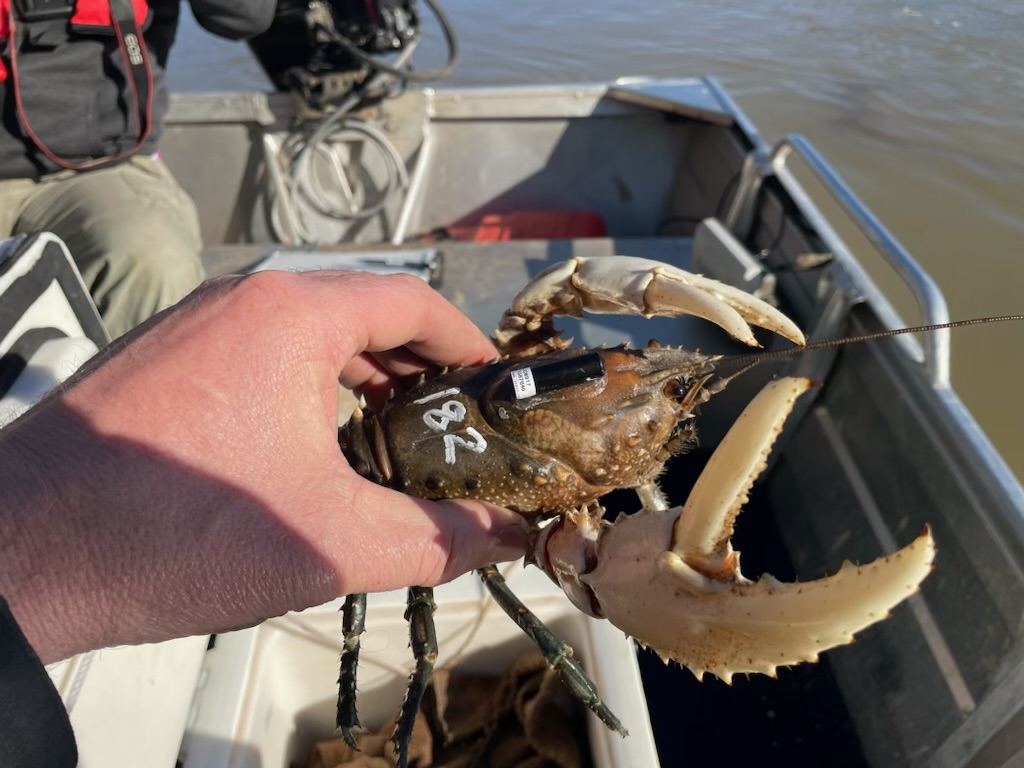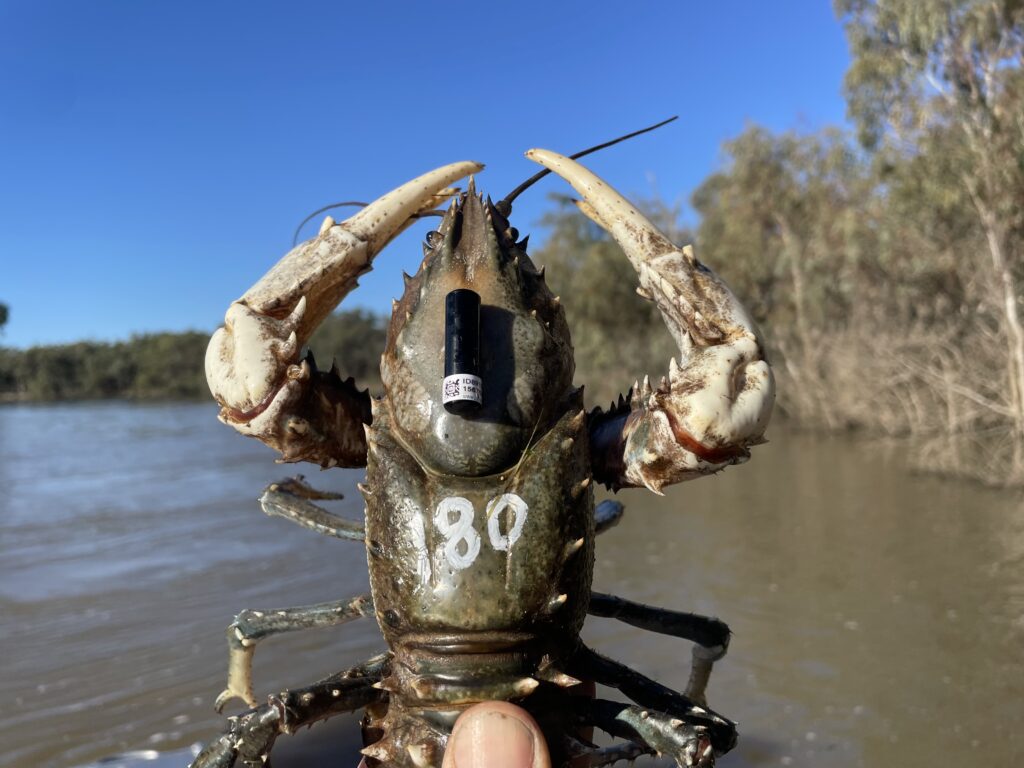How do you remotely track a Murray Crayfish?
The Murray Crayfish is the second largest freshwater crayfish in the world, and hadn’t been seen in South Australia for 40 years, due to over-fishing and degradation of its preferred riverine habitat. Following the recent flooding and improvement of water quality, Nature Glenelg Trust and the Murraylands and Riverland Landscape Board recently released Murray Crayfish back into the southern reaches of the Murray River in SA.
Now, these Murray Crayfish, back in SA for the first time in 40 years, will be tracked using acoustic telemetry.
Small transmitters have been adhered to the backs of Murray Crayfish by the aquatic team at NGT. The activity and movement of the crayfish will be picked up by receivers that were installed along the River Murray in SA across the reintroduction reach and beyond, a technique that has not yet been used for any freshwater crayfish in Australia. These data will provide new and important information about the diurnal (daytime active), nocturnal, seasonal, and environmentally influenced movement patterns of Murray Crayfish. It will also provide information about the activity of these crayfish following translocation into a new area, which is vital information for the ongoing management of this iconic and threatened species.
We’ll make sure to keep you informed on the results of this important work in the future.


The acoustic telemetry is a partnership between NGT, CSIRO and PIRSA and forms part of the ‘Bringing Murray Crays Back to SA Project’, an initiative that is a partnership between NGT, and the Murraylands and Riverland Landscape Board through funding from the landscape levies, with support from New South Wales DPI, Victoria Fisheries Authority, OzFish Unlimited, North West Aquaculture, River Murray & Mallee Aboriginal Corporation (RMMAC) and PIRSA.
